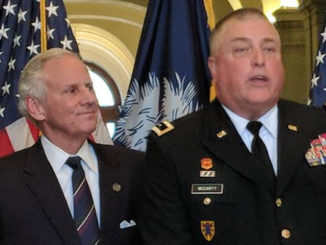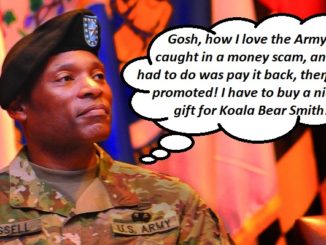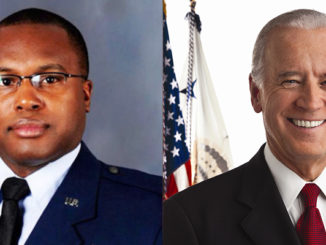
After twenty years of publishing articles on MilitaryCorruption.com, it’s crystal clear the entire military judicial system has nothing to do with justice, especially “Equal Justice Under Law.”
The military judicial system is stealthily treacherous, highly deceitful and deeply flawed by design and rigged in favor of the military in order to remove what they view as “undesirables,” all under the color-of-law.
Military members who blow the whistle on massive fraud are considered by the military as extremely undesirable. Others are considered politically undesirable and removed from military service to ingratiate flag-ranking officers with Members of Congress.
The current military judicial system should be totally scrapped, because it’s too susceptible to political machinations and frequent manipulations. It needs to be built anew with checks and balances that preclude unlawful command influence, retirement to avoid prosecution and a myriad of other Machiavellian defects resulting in a totally corrupt military judicial system.
If you care about how America’s military personnel are being abused, mistreated and unlawfully imprisoned, take the time to read this excellent article by Keri Theole. It clearly states the case…
The Emperor Has No Clothes:
Exposing the Corruption of the
Uniform Code of Military Justice (UCMJ)
Authored by: Keri Ross Thoele, MEd. Educational Leadership, American Citizen and Patriot
Originally Published by: Criminal Justice Law International
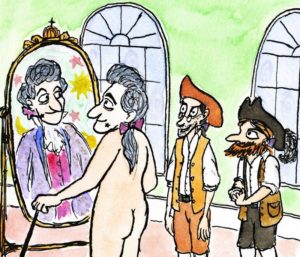
In the early 1800s, Danish folk tale author, Hans Christian Andersen, wrote a cautionary tale about two unscrupulous tailors who were hired to make a new outfit for the Emperor.
The cunning tailors touted the new clothing would be invisible to anyone unfit for his position or just plain stupid. In reality, they only pretended to work and made nothing at all.
On the day of the revealing of his newly made clothes, the Emperor was “dressed” in his magical suit and paraded about the town.
Everyone showered him with compliments about his outfit, each fearing he might be the only person “stupid” enough to not be able to see the garments.
It took an audacious and pragmatic child to shout out over the crowd that the Emperor was, in fact, not wearing any clothes at all.
This tale has become synonymous with exposing hard truths, those that are often overlooked in plain sight, ignored by the powers that be, and difficult to remedy. The plain truth is the UCMJ is a broken and corrupt system that goes largely unchecked by the Congress and the American public in general.
Unless someone is directly affected by this corruption or knows someone who is, he or she is often unaware of just what can happen – and what has happened in numerous incidents.
United States military personnel are being court-martialed with little to no evidence, for carrying out their duties in wartime, or for making split-second life and death decisions on the battlefield.
These sailors, soldiers and Marines who are otherwise not only law-abiding citizens but who are also the type of individuals who make huge sacrifices to serve and protect others are being charged and convicted of felonies by a military system that is out of control.
This injustice is exemplified in the cases of John Hatley, Clint Lorance, and Matt Golsteyn. Unfortunately, these three examples are not isolated cases or the only cases that need to be fixed.
EASIER TO OBTAIN CONVICTIONS IN A MILITARY COURT
There is very little transparency and the military operates largely unchecked. The Army prosecution has, on average, a 98% annual conviction rate. This is not because the Army is careful to try only cases with iron-clad evidence; in fact, the opposite is true – soldiers have been convicted with little evidence and in a trial environment that departs from standard expectations of the rights of the accused.

Take the case of Army First Sergeant John E. Hatley. (For a detailed description of the facts of the case, read the first article in this series, “Failing a Hero: The Shocking Conviction and Incarceration of John Hatley.”)
Hatley was first accused by a junior soldier, Jesse Cunningham, that he was in the process of disciplining who wanted to make a deal with the Army to keep from getting in trouble himself.
To deflect attention from his own misconduct and direct it toward the senior NCO who was in the process of disciplining him, Cunningham accused Hatley and his patrol of executing four detainees instead of releasing them.
After being coached by CID, a separate coerced “witness” further accused Hatley of shooting and killing a mortally wounded enemy combatant on a different patrol. Hatley was found “not guilty” of that charge because it was proven that the insurgent died of a gunshot wound to the leg which he received during the firefight.
Even though this key “witness” for the prosecution lied about one of the incidents in which he attempted to frame Hatley for murder, the Army was still willing to accept his word as viable testimony during the rest of the trial and did not attempt to impeach the perjurer.
At the time of the accusations against Hatley, the Army was trying to smooth over political relations and appease a foreign government. They needed to prove they were holding American soldiers responsible for their actions.
Cunningham handed them a case that would meet their agenda, even if it was at the expense of a highly-decorated, long-serving American hero.
In Hatley’s case, the Criminal Investigation Division (CID) conducted an investigation and found no physical or forensic evidence to support that a crime had even occurred.
Although led to the canal were Cunningham claimed the bodies were dumped and sending a 7-man dive team to search, they were not able to recover any bodies or any evidence to suggest that bodies had been dumped there.
At the alleged site, they found no physical or forensic evidence – no bullet casings or fragments, no bone fragments, nothing. CID interviewed the families of the “alleged” victims who claimed that no one in their family was missing.
Neighbors collaborated this. So without bodes, without names, without anyone even identified as missing, the Army still proceeded with the General Court-Martial.
All the Army could hope to use as evidence was testimony. After finding out he would not be granted immunity after all, Cunningham stopped cooperating with the investigators, but the story he concocted had already been reported by his lawyers to CID, and there was nothing he could do to recant it.
The Army then coerced the men on the patrol to give false testimony by threatening them with life in prison, scaring them with the prospect of how this would affect their families, promising them immunity if they just testified against their superior non-commissioned officer, and telling several of them that the others were pointing the finger specifically at them.
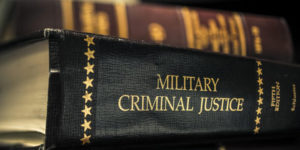 During a pretrial motion for Hatley in explaining why Hatley’s trial had been delayed, Captain John Riesenberg, of the Staff Judge Advocate’s office, testified, “The government’s prosecutorial plan was to roll the rest of the witnesses in the companion cases against the accused [Hatley].
During a pretrial motion for Hatley in explaining why Hatley’s trial had been delayed, Captain John Riesenberg, of the Staff Judge Advocate’s office, testified, “The government’s prosecutorial plan was to roll the rest of the witnesses in the companion cases against the accused [Hatley].
You know, that basically has been the plan from the beginning…” (Record of Trial p. 168). In other words, the Army had no case against Hatley unless they could first coerce the other witnesses into pleading guilty and taking deals, including immunity, then compelling them to testify against Hatley. The Army’s was more focused on prosecuting Hatley than getting to the truth of the matter.
To achieve this, the Army had a plan that involved three tiers of culpability. They would start with the soldiers farthest removed from the alleged crime, which they identified as Tier 3, assign discretionary punishments without judicial proceedings (Article 15 UCMJ or “non-judicial punishment”), and then offer immunity in exchange for guilty pleas.
Then they would move to what they identified as Tier 2 involvement, this time armed with coerced statements from soldiers in Tier 3 that implicated soldiers in Tier 2. These soldiers also realized that it was easier to “roll over” and plead guilty rather than to fight the charges because upon doing so, they were granted immunity or given reduced sentences.
Finally, the Army attacked the Tier 1 soldiers, the leaders of the platoon. When cross-examined by the defense about these tactics, Captain Riesenberg stated, “…we were giving everybody Article 15s and then ordering them to testify.
If that’s considered ‘rolling,’ then that’s what’s going to happen” (Record of Trial p. 173). Unfortunately, the Army’s tactics worked. Facing dire consequences, all of the soldiers “rolled” except Hatley.
By the way, Hatley was offered the same deal as the others if he would “roll over” on his superiors, but he would neither admit to a crime he didn’t commit nor implicate someone else falsely.
The men were well aware that they had little to no chance to prove themselves innocent when pitted against a “system” that can best be described as incestualized: the judge, the prosecutor, and the jurors (if any are present) are all military and have the same agenda.
If this were a corporation, for example, the judge would be the CEO; the military defense attorney, the COO; and the prosecutor, the CFO. Everything is internalized and there is no transparency.
Soldiers can request civilian counsel, and Trial Defense Service does have a separate chain of command; however, they are often so young, inexperienced, and overworked that they do not have the time nor the leadership to fully prepare and present a defense for murder.
 In such an environment, how can anyone receive a fair and unbiased trial? The convening authority, who determines to send the case to trial, personally picks the jury members, and the prosecutor is in his direct chain of command.
In such an environment, how can anyone receive a fair and unbiased trial? The convening authority, who determines to send the case to trial, personally picks the jury members, and the prosecutor is in his direct chain of command.
The decision of the outcome of the trial, whatever it may be, has been made prior to the defendant ever walking into the courtroom, and that decision is in support of whatever the leadership desires – whatever the political agenda is behind the court-martial itself.
While not every trial is political and not every defendant innocent, there are several high-profile cases where this is exactly what has happened, and there is nothing in place to stop this blatant abuse of power and politics.
A summary of the realities of the reach, practices, unspoken rules, and injustices of the UCMJ:
- The burden of proof is legally on the prosecution; however, due to the unfair practices (as outlined), in reality, it falls on the defendant.
- Little, to no physical or forensic evidence is needed to obtain a conviction.
- With the low evidence threshold, it is difficult, if not impossible for the accused to defend himself. (*In John Hatley’s case, just how does one prove that he didn’t kill someone who is completely unidentified – no names, no bodies, no missing individuals?)
- Testimony is considered evidence, but may be gathered under false pretenses and coercion.
- Numerous soldiers have found that they cannot even challenge the credibility or motivation of accusers or witnesses regardless of their character. (*In Hatley’s case, both the motivation [to get immunity for a crime] and the character [evidenced to have lied previously about Hatley] of his accuser were ignored.)
- Soldiers may be held and interrogated intensely using tactics, including intimidation, threats, promises, and lying, without being charged
- A soldier technically has the right to have an attorney present during this questioning, but most of the soldiers are unaware of that, and the usual practice is to not have counsel present, not even an impartial observer or an Amnesty-type of representative to ensure no human rights violations occur.
- The prosecution gets the last word during every aspect of the trial.
- All authority lies within a single person, the court-martial convening authority. The convening authority even handpicks the jury, and jury members may be in the chain of command, outrank, or rate other members of the jury. In the federal system, this authority is divided between the judge, prosecutor, police (to investigate), and an impartial jury. (*In John Hatley’s case, four of the panel members were in the chain of command or rated by other panel members.)
- There are no “grand jury” proceedings to determine if there is even enough evidence to prosecute. An Article 32 hearing, which used to be the military counterpart has been “reformed” in such a way that it is simply an opportunity for the prosecution to showcase charges and make misleading statements to the media. It is no longer a safeguard for the accused.
- Appeals processes are internal and fall under the auspices of the very entity from which the soldier seeks relief. That is, when a soldier appeals on any level, the case is remanded back to the very military that prosecuted him or her in the first place. It is difficult, if not sometimes impossible, to get his or her case heard by any court or authority that is not controlled by the military.
- A military member can be confined prior to being charged.
- There is no bail in the military.
- Misdemeanors are disposed of at levels below General Court-Martial. Felonies go to the General Court-Martial, the highest level court in the military justice trial system. All convictions in a General Court-Martial are, therefore, felony convictions. This includes a single count of fraternization which bore no malice.
- The military only requires a ¾ vote for a capital crimes offense and a 2/3 vote for a non-capital crime; whereas, the federal system requires a unanimous vote.
- There is no requirement for 12 jurors; juries could consist of, as few as five (5) military personnel.
- Soldiers are not judged by a jury of their peers, but rather a jury of their superiors who will most likely have a political agenda. The jury is hand-picked by the convening authority who sent the case to General Court-Martial. The military does not allow civilians to sit on a military jury. (There may be a possibility for a Department of Defense or Department of the Army civilian to be assigned to a jury, but the soldier would still be confronted with the issue of unlawful-command-influence. Too often, many of the senior members have prejudices or have a mentality of “not in my Army” which prevents them from looking at a situation objectively. In a civilian court, the accused has individuals from all walks of life and occupations with no one having superiority over the other. This is the opposite in a military court of law. On several occasions, there will be individuals within the jury that actually work for or conduct evaluations on other members of the jury. (*In John Hatley’s case, the judge himself established deference to rank on the first day of trial when he addressed only the most senior members of the jury, Colonels, by name and the rest of the panel as a group. [i.e. “Colonel (last name omitted) and the rest of the jury, thank you for your presence here today.”])
- Most military convictions come through pre-trial agreements, because the accused soldiers are aware, there is little likelihood (less than 3% chance) of prevailing in a military court-martial.
- In a military trial, if the prosecution is struggling, the judge will coach them on how to admit evidence. (*In John Hatley’s case the prosecution attempted to admit a new unstipulated timeline on the first day of trial to replace the stipulated timeline which proved the prosecution did not act with due diligence before trial. The judge asked what proof they had the timeline was accurate, and the prosecution stated they would testify that it was true. The judge admonished the prosecution and informed them that was not enough. He further stated that there must be a preponderance of evidence and even went so far as to say, “if that were enough, then we could just allow MSG Hatley to take the stand and say he didn’t do it, and we could all go home.” John Hatley was informed by his defense attorney that the judge took a recess, and the attorneys went back into the judge’s chambers. Approximately 10-15 minutes later, the court reconvened and the prosecution took the stand and testified to the veracity of the timeline and it was admitted. Afterward, the attorney who testified went back and continued to serve as the second-chair prosecutor for the remainder of the trial. This is highly unorthodox, if not illegal, and case law has established precedence that it should not be allowed. When Hatley asked his attorney, “Didn’t the judge just say that he couldn’t do that?” his attorney just threw up his hands.)
- The individuals that prefer (make the charges) and refer (send the charges to trial) are not required to have any legal training and normally do not. In the federal system, this is a position reserved for the grand jury based on the evidence presented by an Assistant United States Attorney.
- Double jeopardy is illegal in civilian courts, but in the military, a soldier can still be tried for the same crime twice if it occurs in the United States, through both a state court and a military court.
- Soldiers convicted in a military court have been found innocent of the same crime in a State Court only to be recharged and found guilty through the military and vice versa.
- Article 67a of the UCMJ denies access to the Supreme Court if the Court of Appeals for the Armed Forces (CAAF) denies review. CAAF is the second level military appeal over the Service Court of Criminal Appeals, e.g. the Army Court of Criminal Appeals. The government defense appellate division will tell a soldier that he or she cannot file if the CAAF does not grant discretionary review to his or her case.
- The US military does not have probation as an option whereas the federal judicial system does.
- The military is extremely susceptible to unlawful-command-influence and political pressures. (*This was seen time and time again during the Obama Administration and his push for zero tolerance in the military judicial system. With this type of pressure being applied, it is no wonder that commanders feel, or are told, they must come back with convictions otherwise they will face the consequences. Additionally, they could also feel compelled to come back with convictions to keep the media or the public from looking too closely at the UCMJ.)
- The UCMJ holds that every killing in combat is presumed lawful; however, the Army has on several occasions mischaracterized combat actions as murder.
The unfair tactics of the UCMJ have not only been used to convict soldiers when there is a lack of evidence that a crime even happened but also to twist the justified and honorable actions and decisions of soldiers engaged in combat and charge them with murder.
FIRST LIEUTENANT CLINT A. LORANCE

In June 2012, Army First Lieutenant Clint A. Lorance replaced an Infantry Platoon Leader who was medically evacuated due to shrapnel wounds from the blast of an IED.
Three days after taking charge as the Platoon Leader, Lorance made a split-second decision to protect his men by directing them to open fire on three Afghan males speeding towards his platoon on a single motorcycle. For that act, he was convicted of two counts of murder and one count of attempted murder.
Lorance never fired his rifle but gave an order to protect the men of his platoon when the single motorcycle with three riders was speeding towards them in a minefield.
The Army claimed the riders were civilian casualties, but fingerprint and DNA evidence shows they left their prints and DNA on improvised explosive devices, which the prosecution did not disclose.
Further, the prosecution did not disclose an Army report (SIGACT for “Significant Activity”) that concluded Lorance’s platoon was being scouted for an impending attack or ambush and that at least one insurgent was killed.
Similar to Hatley’s case, nine soldiers were initially accused of murder, had those charges held over their heads for months, but then given were immunity from the concocted charges and ordered to cooperate against Lorance.
As stated above, it is more important in the procedures for the Army to get a conviction than it is for the court to come to a just and truthful conclusion.
MAJOR MATTHEW GOLSTEYN

In a case that is currently active, Army Major Matthew Golsteyn, a highly decorated Army Special Forces officer, has been charged with premeditated murder of a Taliban bomb-maker, who is known to be responsible for the deaths of at least two U.S. Marines in Marjah.
Despite the prior conclusion of an Army Board of Inquiry that no clear evidence of any violation of the rules of engagement during Major Golsteyn’s 2010 deployment existed, he is now facing life in prison. A previous probe into Golsteyn’s actions was closed.
It is the practice of the Army to contradict their own findings of a lack of evidence or no misconduct and to proceed with a trial anyway. Like Hatley, Golsteyn is a highly decorated officer. Among other accolades, he was awarded the Silver Star, the nation’s third highest award for combat (valor), for his actions in Afghanistan in 2010 while a pending Distinguished Service Cross was being routed to the Secretary of the Army.
Golsteyn was awarded the Silver Star for “displaying heroic behavior and valor” by repeatedly exposing himself to direct enemy fire and personally neutralizing multiple enemy positions during “four grueling hours of heavy combat with a determined force.”
Despite the Secretary of the Army personally signing the prestigious Distinguished Service Cross for his heroic actions in combat, Golsteyn was arbitrarily stripped of his Silver Star and his Special Forces tab during the investigation without any due process rights.
All three of these soldiers, Hatley, Lorance, and Golsteyn, have been supported by numerous men who served with them and have attested to their honor and valor. Further, they each have the support of their respective Congressmen, but even at that, have still not yet received justice.
THE NEED FOR A SEPARATE FEDERAL AND
MILITARY JUDICIAL SYSTEM IS ANTIQUATED
Historically, there was ground for this because there were limited means to send soldiers back to the United States from overseas to ensure a speedy trial. This is no longer the case. With the advancements in transportation and technology, a speedy trial can be assured for military personnel in the federal system as easily as it can be for accused who are not military.
Further, senior Army leadership will often quote that the Constitution provides the military with judicial authority due to the “unique and peculiar circumstances” under which the military operates; however, that is acceptable only for non-judicial punishment.
Judicial punishment should occur only when an American soldier has been granted the full protection of the Constitutional rights of the accused afforded to every other American citizen. In previous attempts to by Congress and senior military leaders to reform the UCMJ, they have only gutted the rights of the accused, making the system worse not better.
Soldiers fight for the love of their country. Their presence in battle on the world’s stage ensures the protection of the American way of life for all Americans, yet they are under the threat of losing their freedom and serving lengthy sentences in Leavenworth because they are under the auspices of a system that takes away the very rights they secure for others.
THE UCMJ IS TOO CONVOLUTED AND POLLUTED
The only way to ensure a fair trial and justice for American soldiers accused of crimes is to provide paralleled transparency: the American soldier must be tried in the same federal judicial system to which every other American has access! THE EMPEROR HAS NO CLOTHES, and it is time for Americans to fight for military personnel who are wrongfully accused and ensure this travesty does not continue to go unchecked.
What can you do to help?
- Write to the President to ask for a “disapproval in the findings of sentence” for John Hatley and Clint Lorance (who have both been convicted and are serving time in Leavenworth). Demand that all charges be dropped against Matt Golsteyn.
- Go to the United American Patriots website to become educated on the plight of soldiers that the UAP supports and to find ways that you can help support these soldiers. https://www.uap.org
- Ask your Congressman to sponsor and/or support a bill to abolish the UCMJ (at least for judiciary punishments) and allow soldiers to be tried under the same system as all other United States citizens to prevent further injustices.
- Write to Texas Congressman Bill Flores who has taken up this fight for John Hatley and Clint Lorance.
Sources:
Record of Trial, US vs. MSgt. Hatley, John E. (2009)
United American Patriots https://www.uap.org/
Correspondence, John E. Hatley (2019)
Free John Hatley Website http://freejohnehatley.com. (Rose Lipscomb, Webmaster)
Maher Legal Services, Attorney John Maher https://maherlegalservices.com
Free Clint Lorance Website http://www.freeclintlorance.com

